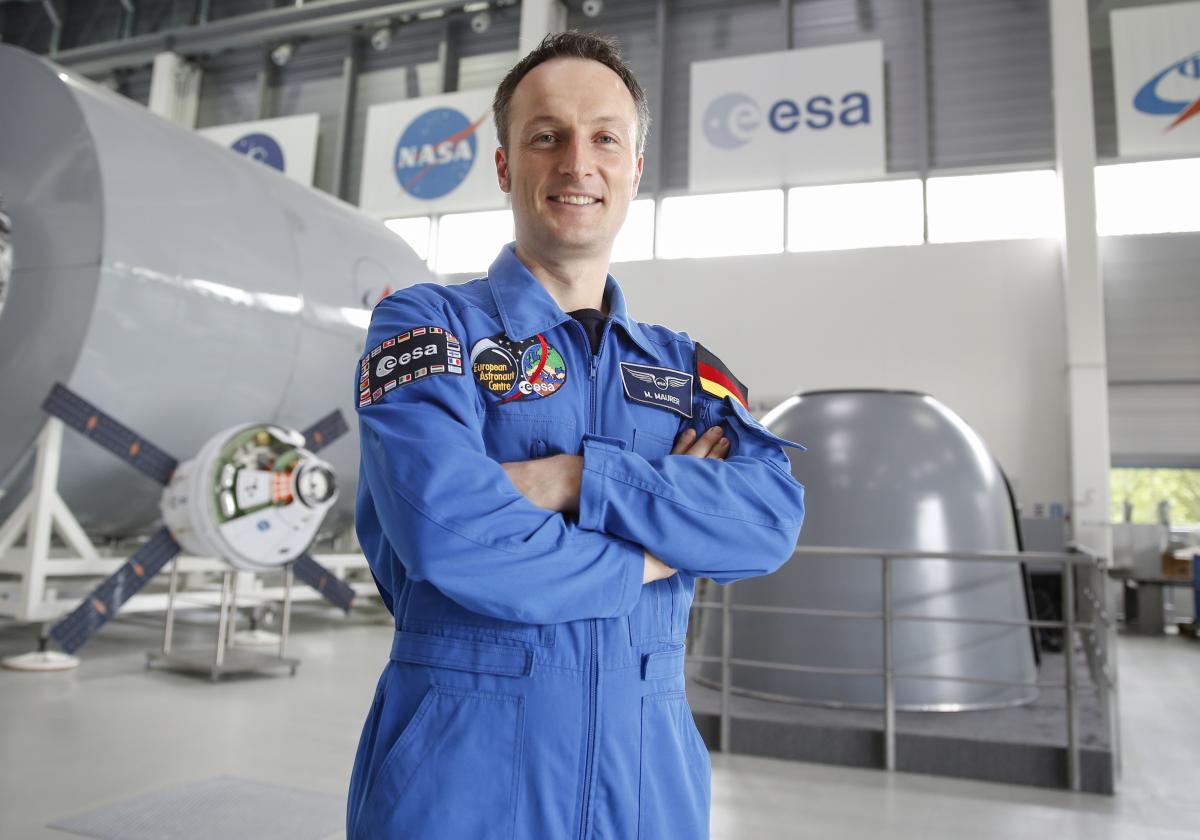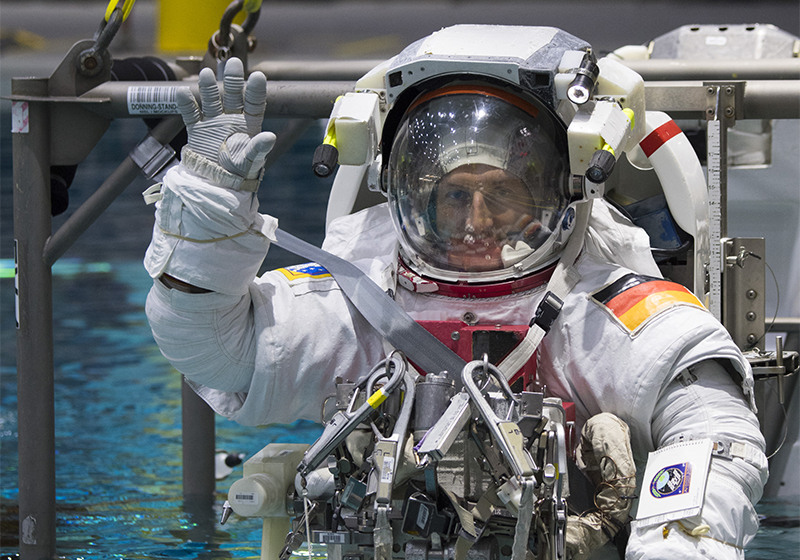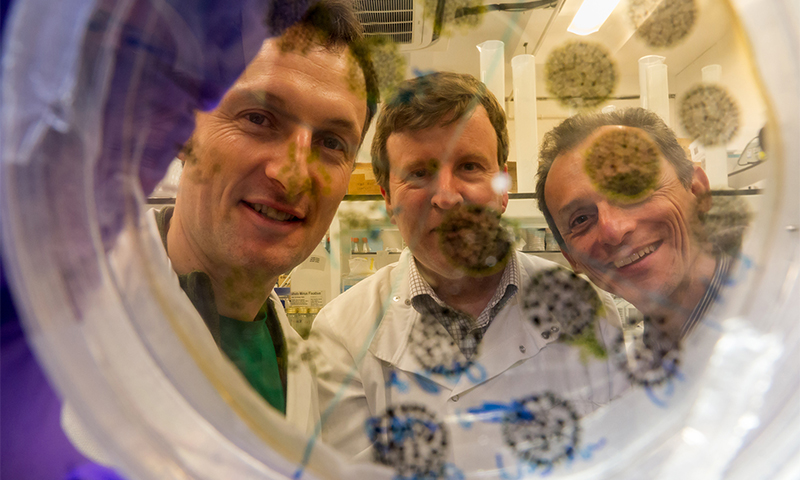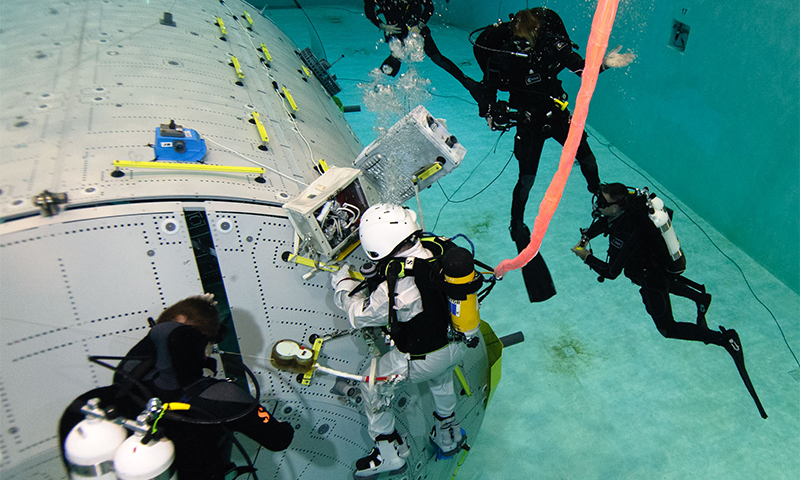Becoming an astronaut: interview with Matthias Maurer Inspire article
The European Space Agency’s newest astronaut recruit talks about his exhilarating experiences in astronaut training and what the future has in store for space flight.
After a challenging year-long selection process to become one of the European Space Agency’s newest astronaut recruits, Matthias Maurer made it to the final group of ten candidates. But, with only six places available to fly to space, his aspiration to become an astronaut was put on hold at the final hurdle. Science in School spoke to Matthias about his unforeseen path to becoming an astronaut, and what he can expect if he ultimately travels to space.

ESA/Sabine Grothues
How did you first become interested in science?
From an early age, I was fascinated by engineering. My uncle is an engineer, so I was always interested in the stories he told me about his job. As a very small kid, I wanted to become a pilot, or a Formula One racing driver – so there was a technical interest right from the start.
My initial plan was to study aerospace engineering, but I guess my career path was triggered partly by coincidence. I was completing my military service as an ambulance driver when the Berlin wall came down in Germany. So, in the summer of 1990, I received a letter informing me that I was relieved of my service ahead of time – I could start my studies a year earlier than planned. But the deadlines for applying to study aerospace engineering had closed six months before. Only a few universities in Germany reopened applications for special cases like mine, so I decided to study the next best thing – material science engineering.
My plan was to change to aerospace engineering later, but after one year of studying at my home university in Saarbrücken, Germany, I discovered that material science engineering was so rich and interesting that I wanted to continue. In the years that followed, I studied in the UK, France and Spain, and completed my PhD in material science engineering in 2004.

ESA/Stephane Corvaja, 2017
When did you decide that you wanted to become an astronaut?
When I left school at the age of 19, I did not have a clear plan for my career. When the European Space Agency (ESA) announced in 2008 that it would begin the selection for a new class of astronauts, I immediately realised that it was exactly what I wanted to do.
The preferred age range for an astronaut is between 27 and 37. By that time, you have finished studying and have at least three years’ experience as an engineer, scientist or doctor, or a certain number of flight hours as a pilot. When I applied for the selection process, I was already 37. That said, Italian ESA astronaut Paolo Nespoli has just returned from space, and he is 60 years old. We now understand that space flight is not so hard on the body, so the health requirements for flying to space are changing, too.
What advice would you give to someone who wants to become an astronaut?
One of the biggest problems is that you can’t plan your life around becoming an astronaut. Even if you have all the right experience, the limiting factor is the number of available spots to fly to space – but this could change in the next 20 years, thanks to commercial space flight.
In Europe, you would find hundreds of people who have the foundation to become a good astronaut – then it’s down to luck whether there is a selection process at the right time. Don’t let anyone tell you that you can’t do it, though. Astronauts aren’t unique in the sense that we are smarter; we are just unique in that we were a bit luckier than others.
Lastly, always have fun, pursue the subjects you like best, and maybe it will add up, as it did in my case.
Tell us about how you got to be an astronaut.
The selection process took one year. The more I progressed, the more I believed I could actually do it. We went from 8500 candidates to only ten. But, at the final stage, we were told there was room for only six of us to fly to space. I was not among the six, and instead, I was put on a reserve list. It was a massive disappointment – a bit like at Christmas when you receive your dream present, only for your parents to tell you the next day that it wasn’t actually for you.
After the selection process, I joined ESA in 2010 as a member of their ground personnel, communicating between the control centre on Earth and the astronauts in space. But a couple of years ago, ESA had the capacity for more space flights and astronauts. They immediately came to me and asked ‘Do you still want to become an astronaut?’ I said yes.

ESA/S Sechi
You began astronaut training in 2015. What did it involve?
We currently fly on Russian Soyuz spacecraft, so the training began with intensive language courses in Russian. Since then, I have also started learning Chinese in anticipation of our cooperation with China. In basic astronaut training, you learn all the skills to become an astronaut, from knowing how to react quickly to failures on the International Space Station (ISS), to collecting valuable samples for scientific studies. We are trained as paramedics and we can also pull out teeth and do fillings. Survival training is also a big part – recently I was in China practising an emergency capsule landing in the open sea. I was hoisted out of the water by a helicopter hovering above me – I felt like I was in a James Bond movie!
When will you fly to space?
I am now ready to be assigned to a space mission at any time. There are currently six astronauts on board the ISS, but in future there will always be seven. ESA usually has only one space flight per year to the ISS and the next free spot is in 2020. I’m really hoping to be on that flight and to represent Europe in space.
What do you think will be the hardest part about living and working in space?
Physically, the most difficult part will be the spacewalk – working six hours in a space suit is really tough. It is difficult being away from your family, but it is only for half a year and I will be able to call them every day. Another thing that I will miss will be the fresh air – jogging in the forest or along the beach.
The space station is more or less the size of a football pitch so you can easily go the entire day without seeing another astronaut. But your sleeping quarter is as small as a cupboard, so that’s all you have for privacy.
The astronaut training means we are well prepared for living in space. However, I can imagine that losing sight of Earth, for example in the case of flying to Mars, would be difficult psychologically.
Would you fly to Mars?
I would do it if I had the confidence that it would be safe for me to return. I would never do it on a one-way mission.

ESA/Helmut Rueb
What would teachers find most interesting about your job?
Often, the most fascinating part about space is how things differ from Earth. For example, how does a candle burn in space? When a flame burns on Earth, heated gases rise from the flame, forming the elongated shape we are used to seeing. In space, hot air doesn’t rise, so the flame is like a ball. We can then investigate why this happens.
In that sense, astronauts act as facilitators for scientists. One of my favourite projects was developing new alloys in space for the next generation of aeroplane turbine engines, so they can fly further with less petrol. Protein crystallisation in space is also fascinating – the weightlessness means that the crystals grow perfectly, so scientists fly proteins to space to be crystallised, before they are brought back to Earth for X-ray analysis. Space research also has applications for medicine, for example testing medication to slow down or stop osteoporosis. And we also address fundamental questions such as where life comes from, whether we are unique on Earth, and what organisms can survive in space.
Finally, what is the future of space flight?
It is an exciting time for space flight – lots of changes are happening. The ISS will operate for a few more years, and ESA is already studying potential space platforms for the post-ISS period. The Chinese space station will be ready by 2023, and the Americans are talking about a commercial space station that could replace the ISS. We also have long-term international plans to return to the Moon and eventually – in the next few decades – put the first people on Mars. Space flight is a truly international endeavour, and it is essential that we have people from different countries, different backgrounds and different fields, working together.
Resources
- Watch a video showing Matthias Maurer in astronaut training.
- Visit the ESA education website for classroom resources, hands-on projects for pupils, and information about teacher training.
- Learn more about human space flight and exploration by visiting the ESA website.
